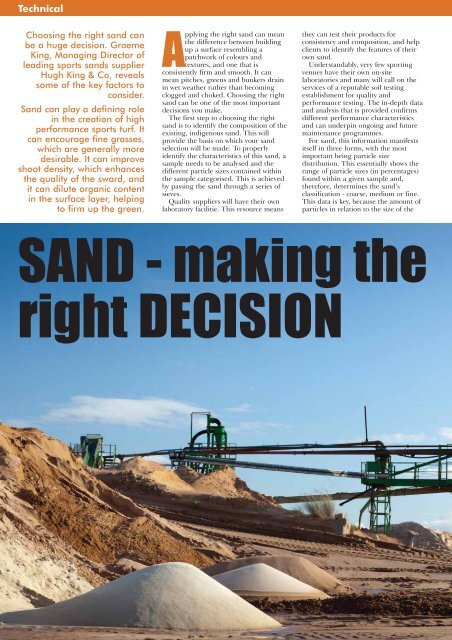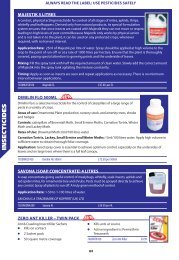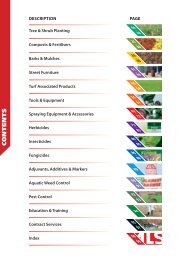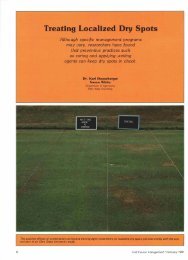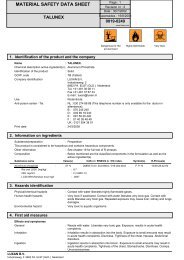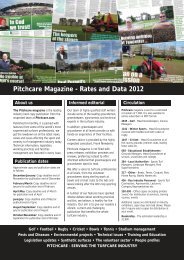these Open Championship Clubs choose to relief grind - Pitchcare
these Open Championship Clubs choose to relief grind - Pitchcare
these Open Championship Clubs choose to relief grind - Pitchcare
Create successful ePaper yourself
Turn your PDF publications into a flip-book with our unique Google optimized e-Paper software.
Technical<br />
Choosing the right sand can<br />
be a huge decision. Graeme<br />
King, Managing Direc<strong>to</strong>r of<br />
leading sports sands supplier<br />
Hugh King & Co, reveals<br />
some of the key fac<strong>to</strong>rs <strong>to</strong><br />
consider.<br />
Sand can play a defining role<br />
in the creation of high<br />
performance sports turf. It<br />
can encourage fine grasses,<br />
which are generally more<br />
desirable. It can improve<br />
shoot density, which enhances<br />
the quality of the sward, and<br />
it can dilute organic content<br />
in the surface layer, helping<br />
<strong>to</strong> firm up the green.<br />
Applying the right sand can mean<br />
the difference between building<br />
up a surface resembling a<br />
patchwork of colours and<br />
textures, and one that is<br />
consistently firm and smooth. It can<br />
mean pitches, greens and bunkers drain<br />
in wet weather rather than becoming<br />
clogged and choked. Choosing the right<br />
sand can be one of the most important<br />
decisions you make.<br />
The first step <strong>to</strong> choosing the right<br />
sand is <strong>to</strong> identify the composition of the<br />
existing, indigenous sand. This will<br />
provide the basis on which your sand<br />
selection will be made. To properly<br />
identify the characteristics of this sand, a<br />
sample needs <strong>to</strong> be analysed and the<br />
different particle sizes contained within<br />
the sample categorised. This is achieved<br />
by passing the sand through a series of<br />
sieves.<br />
Quality suppliers will have their own<br />
labora<strong>to</strong>ry facilitie. This resource means<br />
they can test their products for<br />
consistency and composition, and help<br />
clients <strong>to</strong> identify the features of their<br />
own sand.<br />
Understandably, very few sporting<br />
venues have their own on-site<br />
labora<strong>to</strong>ries and many will call on the<br />
services of a reputable soil testing<br />
establishment for quality and<br />
performance testing. The in-depth data<br />
and analysis that is provided confirms<br />
different performance characteristics<br />
and can underpin ongoing and future<br />
maintenance programmes.<br />
For sand, this information manifests<br />
itself in three forms, with the most<br />
important being particle size<br />
distribution. This essentially shows the<br />
range of particle sizes (in percentages)<br />
found within a given sample and,<br />
therefore, determines the sand’s<br />
classification - coarse, medium or fine.<br />
This data is key, because the amount of<br />
particles in relation <strong>to</strong> the size of the<br />
SAND - making the<br />
right DECISION


